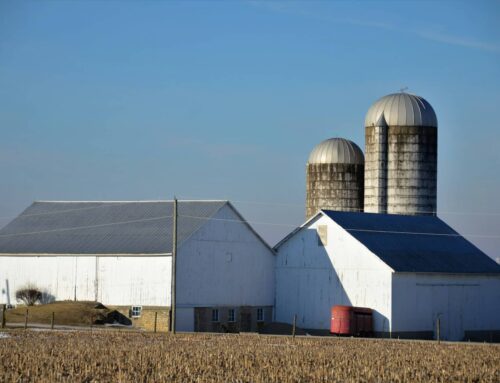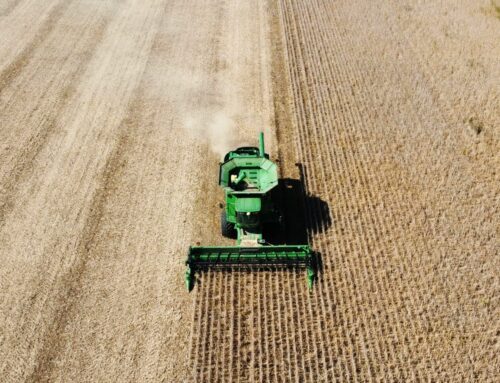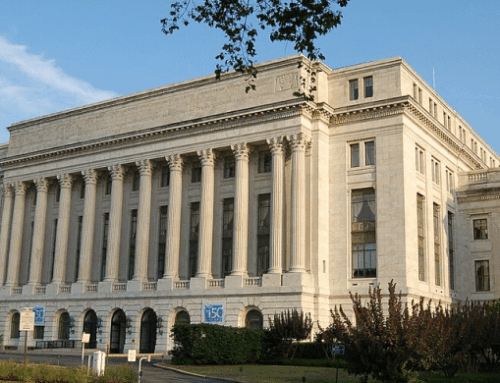View/Download this article in PDF format.
On June 21, the Senate passed a few long-awaited reforms to the farm subsidy maze. Unfortunately, at the same time, they also increased the number of programs eligible for unlimited farm subsidies. And instead of reducing our debt with savings from the long-overdue elimination of direct payments and other commodity programs, lawmakers plowed two-thirds of this $50 billion savings into not one, not two, but three new programs putting taxpayers on the hook for guaranteeing up to 90% of an agricultural producer’s anticipated annual income.
The main program, Agriculture Risk Coverage (ARC), was added to the farm bill’s commodity title (Title I) where payments are subject to income and payment limitations. But the other two – Supplemental Coverage Option (SCO) and Stacked Income Protection Plan (STAX) – were folded into the crop insurance title (Title XI) toward the end of the nearly 1100 page bill. Federal crop insurance is a complicated program where taxpayers pay nearly 2/3 of the cost for agricultural businesses to buy insurance and is expected to cost taxpayers $95 billion over the next decade. There is no limit on the amount of subsidy a single business can receive from taxpayers. Therefore, with the Senate Bill, the number of unlimited subsidy programs increased from one – the crop insurance program – to three. Not only are crop insurance premium subsidies unlimited, but taxpayers have no way of knowing who receives them, recipients don’t have to prove they are actually farmers, and no income limits apply, so even millionaires will receive these subsidies.
Small Step Forward but More Reform Needed
The Senate did adopt an amendment that would curtail, slightly, federal subsidies for crop insurance premiums. While a welcome step forward, Senators Durbin (D-IL) and Coburn’s (R-OK) amendment did not limit – as was frequently reported – but simply reduced the rate of subsidy by 15 percentage points for individuals earning over $750,000 in annual adjusted gross income (AGI). On average, taxpayers currently pick up about 62% of a producer’s crop insurance premium cost by paying 100% of the premium for the basic policy (payments start once a 50% loss occurs) plus additional subsidies if a producer chooses higher coverage level (up to 75% or even 85% of expected revenue). The Durbin/Coburn amendment reduces by 15% the subsidy rate for this optional coverage. No hard cap on overall crop insurance subsidies was agreed to because an amendment offered by Senators Shaheen (D-NH) and Toomey (R-PA) was not one of the 73 to receive a vote. It would have capped premium subsidies at $40,000 per year. The $40,000 amount was chosen as a benchmark because direct payment recipients were subject to this limitation in the last farm bill.
To save taxpayer dollars, the Senate Agriculture Committee could have put limits on crop insurance in addition to the three new cash assurance programs without harming the farm safety net. But instead, lawmakers chose to cap subsidies in only one of these – the new ARC entitlement. Instead of setting a lower limit than direct payments, the Committee increased the limit to $50,000 per year. But wait, there’s more. Peanuts are eligible for their “own” $50,000 limit. So, a producer that grows peanuts and corn could receive $100,000 in ARC payments if farm revenue for both crops fell below 89% of a guaranteed level. ARC participants are also ineligible for payments if their AGI exceeds $750,000 annually, down from $1.25 million in the 2008 farm bill. And thanks to Senator Grassley’s (R-IA) decades-long leadership, stricter guidelines will determine whether individuals are “actively engaged in farming” and thus eligible for ARC payments. But loopholes still exist. And more importantly, crop insurance, SCO, and STAX (a special carve-out solely for cotton) have a blank check from the Treasury with no requirements for public disclosure or assurance that recipients are actually farming the land.
|
Commodity Title
Program
|
Crop Insurance Title Programs
|
||
|
Agriculture Risk Coverage (ARC)
|
Supplemental Coverage Option (SCO)
|
Stacked Income Protection Plan (STAX) for cotton
|
|
|
Guarantees what percentage of anticipated revenue? |
Between 79 and 89% |
Between the level of crop insurance coverage selected by the producer and 79% if participating in ARC or else 90% |
Between 70 and 90% |
|
Fully taxpayer subsidized? |
Yes
|
Nearly, taxpayers pay 70% of premiums |
Nearly, taxpayers pay 80% of premiums |
|
Subject to payment limitations or income tests? |
Yes, $50,000 annually but peanut producers can receive a separate payment; individuals are ineligible if AGI exceeds $750,000. |
No payment limitation; for an individual producer with AGI over $750,000 taxpayers pick up nearly ½ of the insurance policy’s cost, instead of nearly 2/3 of the cost. |
No payment limitation; for an individual producer with AGI over $750,000 taxpayers pick up nearly ½ of the insurance policy’s cost, instead of nearly 2/3 of the cost. |
|
Subject to public disclosure requirements? |
Yes
|
No
|
No
|
|
Projected 10-year cost (CBO) |
$28.5 billion |
$3 billion |
$3.2 billion |
Like ARC, SCO and STAX are so-called “shallow loss” programs that supplement crop insurance, a program that already guarantees up to 75% and sometimes 85% of individual farm revenue. The new alphabet soup programs will add more layers to the subsidy sandwich by paying an indemnity if expected revenue falls below 90% of a pre-determined level. With so many programs designed to insure similar levels of revenue, economists predict taxpayers may be forced to pay multiple times for the same yield or price drop. No other industry would dare ask for this kind of income guarantee – especially while experiencing prices and profits not seen in generations.
Payouts from these programs could be as high as or higher than the discredited direct payments. Direct payments for corn were slightly over $20 per acre over the past five years. One economist has shown that if corn prices dropped to 2007/8 crop year levels at $4 per bushel, ARC payments in Illinois counties could reach $18 per acre, with higher payments at lower crop prices. The average net payment (with the farmer’s premium payment subtracted) for producers enrolled in 80% revenue crop insurance coverage and SCO (but not ARC) is expected to be $28 per acre. Experts also point out that administering these programs will be expensive for taxpayers.
House Should Reject Cash Assurance Programs
As the farm bill debate moves to the House, significant taxpayer savings can be found by resisting the call for new entitlement programs and cash guarantees. At a minimum, effective limits should be placed on both crop insurance and any unwise new shallow loss programs so the largest and wealthiest farm businesses do not receive unlimited subsidies at taxpayer expense. The government should not be in the business of guaranteeing up to 90% of farm business revenue, especially as taxpayers already carry a $15 trillion debt.
By only trimming an average of $2.3 billion per year, the Senate farm bill just shaves 2% of the predicted ten year cost if current policies were simply extended and ends up costing $969 billion. A $2.3 billion annual cut is just 0.01% of the total US debt and pales in comparison to the $55 billion cut envisioned for the Defense Department next year as part of last summer’s Budget Control Act. The House can do better.
July 2012
For more information, contact Joshua Sewell at 202-546-8500 x116, or josh[at]taxpayer.net.










